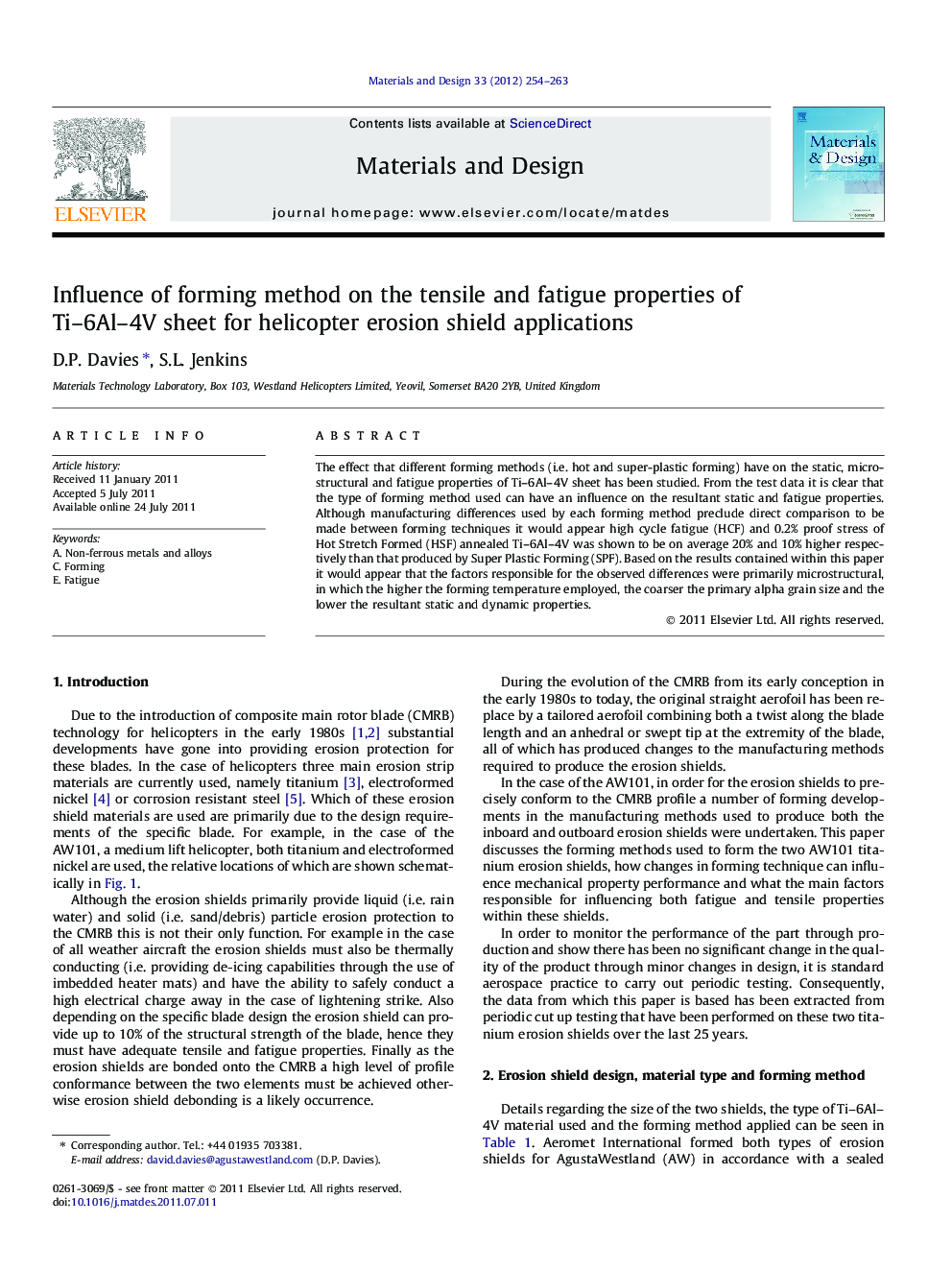| Article ID | Journal | Published Year | Pages | File Type |
|---|---|---|---|---|
| 831139 | Materials & Design (1980-2015) | 2012 | 10 Pages |
The effect that different forming methods (i.e. hot and super-plastic forming) have on the static, microstructural and fatigue properties of Ti–6Al–4V sheet has been studied. From the test data it is clear that the type of forming method used can have an influence on the resultant static and fatigue properties. Although manufacturing differences used by each forming method preclude direct comparison to be made between forming techniques it would appear high cycle fatigue (HCF) and 0.2% proof stress of Hot Stretch Formed (HSF) annealed Ti–6Al–4V was shown to be on average 20% and 10% higher respectively than that produced by Super Plastic Forming (SPF). Based on the results contained within this paper it would appear that the factors responsible for the observed differences were primarily microstructural, in which the higher the forming temperature employed, the coarser the primary alpha grain size and the lower the resultant static and dynamic properties.
► Two difference forming methods SPF and HSF have been studied. ► The forming method has been shown to have a direct bearing on mechanical properties. ► HSF has been shown exhibit higher static and fatigue properties. ► The factor responsible for the reported differences is primarily microstructural.
